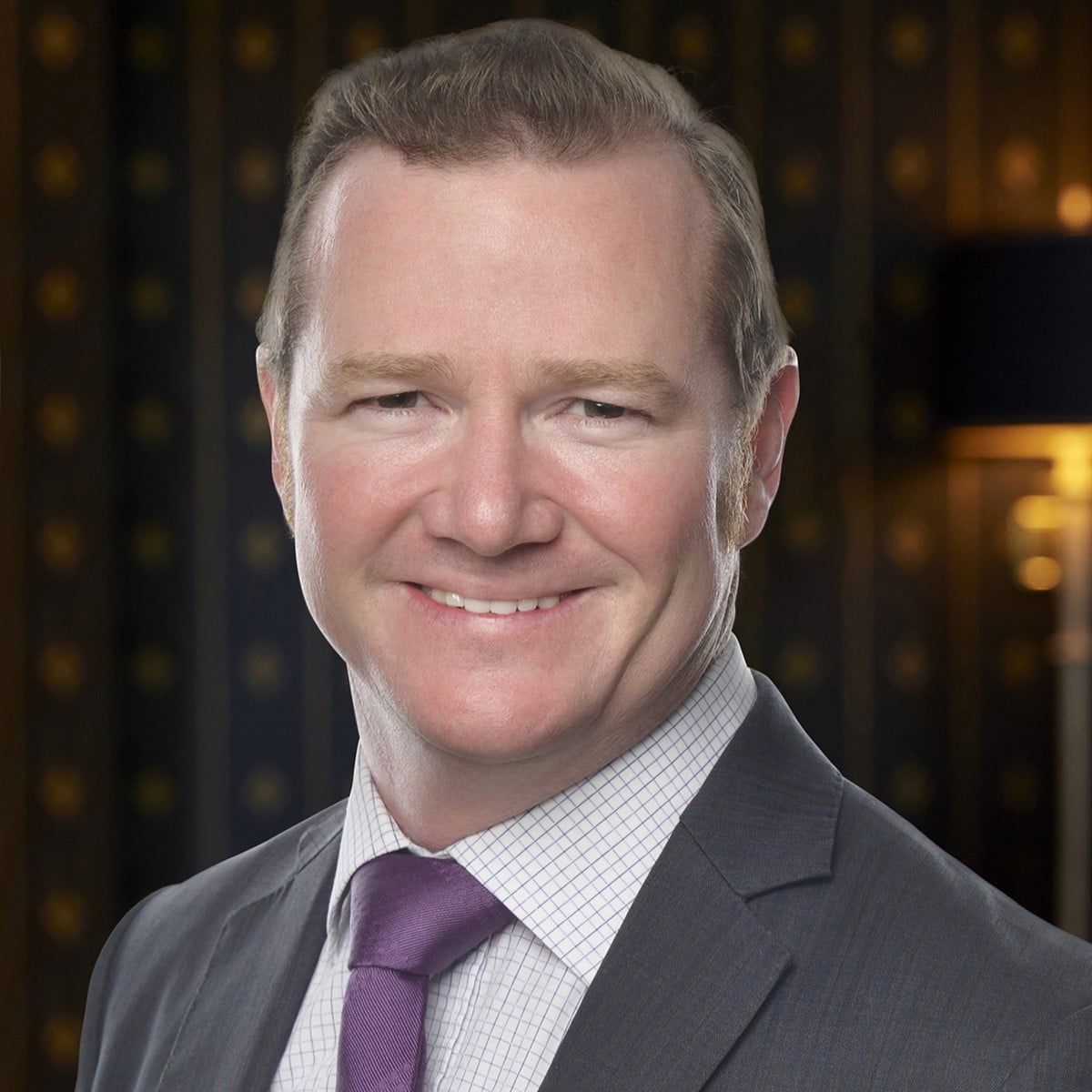In the life sciences field, using multiple claim types to protect inventions can be crucial to a comprehensive patenting strategy. For novel biologics and pharmaceuticals, claims to the product per se, and methods of manufacturing the product, will almost always be a priority. However, other claim types can be useful to protect previously unknown therapeutic uses (second medical uses) of a drug, new dosing regimens or diagnostics. These include methods of treatment or diagnosis, Swiss-type and product for use (EPC 2000) claims.
The patentability, interpretation and scope of such claims can differ significantly between jurisdictions. We outline below the unique approaches of Australia and New Zealand to second medical use and diagnostic method claims and how these claim types can be used by life sciences patentees to develop effective enforcement strategies.
1. METHOD OF TREATMENT (MOT) AND METHOD OF DIAGNOSIS (MOD) CLAIMS
(a) Australia
Both MOT and MOD claims are patentable in Australia.[1] The claims often take the following forms:
MOT: A method of treating/preventing [disease X] comprising administering an effective amount of [compound Y] to a subject.
MOT: Dosage Regimen: A method of treating/preventing [disease X] comprising administering [compound Y] to a subject in a dose of [amount or range] over [schedule of dosing].
MOD: A method for diagnosing [disease X] comprising measuring/detecting [marker X] in [body/tissue/sample].
MOT claims are construed to be limited by purpose and not by result.[2] Therefore, a MOT claim will be infringed if a person administers an effective amount of the relevant compound to a patient in need of the claimed treatment for the purpose of providing such treatment, even though the treatment may not be effective in that patient.
The direct infringer of a MOT or MOD claim will be the person performing the method; for example, a clinician or a diagnostics laboratory. However, as the preferable course of action in relation to a MOT claim is typically to sue the supplier of the product used in the method, rather than to take action against individual clinicians, Australian patent law also provides for indirect (or contributory) infringement.[3]
In order to establish indirect infringement of a supplier, at least one of the following criteria must be met:[4]
- The supplied product (e.g., pharmaceutical) is only capable of one reasonable use;
- The product is not a ‘staple commercial product’ (that is, a product supplied commercially for various uses, such as wool, timber or native essential oils[5]) and the supplier had ‘reason to believe’ that the end user would use it in an infringing way; and/or
- The product is supplied with explicit instructions to use it in an infringing way.
Because no pharmaceuticals have yet been found to fall within the definition of “staple commercial product” and because of the “reason to believe” requirement in sub-paragraph (2) above, it can be difficult for a generic supplier to avoid indirect infringement of a MOT claim by using “skinny labelling” (carving out specific patented indications from the product information (PI) documentation). This can provide an advantage for MOT claims over other types of claims for second medical uses.
Further, a supplier of pharmaceuticals or a provider of diagnostic services located outside Australia may be liable for indirect infringement of a MOT or MOD claim of an Australian patent, so long as the method is being used in Australia. It is important to note that where a diagnostic method is performed entirely outside of Australia, importing and supplying the outcome of the method (eg test results) in Australia will not be an infringement of an MOD claim.[6]
(b) New Zealand
In contrast to Australia, MOT and MOD claims which encompass therapy or diagnosis performed on the human body are generally excluded from patentability in New Zealand.
However, methods performed in vitro or ex vivo (ie exclusively outside the human body), methods performed on a dead body, or methods performed on non-human animals are patent eligible. Methods of cosmetic treatment (which are non-invasive) are also patent eligible.
If a patentable claim can be made, New Zealand law also provides for contributory infringement in a similar manner to Australia. Such infringement may occur when:
- An unauthorised person supplies, or offers to supply, another person with any of the means, relating to an essential element of the invention, for putting the invention into effect; and
- either:
-
- a. the supplier knows, or ought reasonably to know, that the means supplied are suitable and intended by the recipient for putting the invention into effect; or
-
- b. if the means is a staple commercial product, it is supplied for the purpose of inducing the recipient to put the invention into effect.
-
2. SWISS-TYPE CLAIMS
(a) Australia
Swiss-type claims are patentable in Australia and are usually in one of the following general forms:
Swiss-type claims are considered to be directed to a method of manufacture, rather than a product per se. They are construed by the Courts to be “purpose-limited”, in that the medicament resulting from the method or process is characterised by the therapeutic purpose for which it is manufactured.[7] In theory, it is the purpose limitation that supports the novelty of the invention.
Manufacturers can be direct infringers of Swiss-type claims and there is no need to demonstrate indirect (contributory) infringement. In some circumstances, this can mean that Swiss-type claims are advantageous over method of treatment claims.
In establishing infringement of a Swiss-type claim, the manufacturer’s objective or subjective intention in manufacturing the medicament is not determinative. Rather, the central question is whether the medicament is for the claimed purpose.[8] Importantly, this involves considering the physical characteristics of the product, such as its formulation and dosage, packaging and labelling, and PI. The reasonably foreseeable uses to which the medicament would be put after manufacture may also be taken into account. However, where a medicament would be used extensively for purposes that fall outside a Swiss-type claim, the fact that it is reasonably foreseeable, or likely, that a substantial portion of the manufactured medicament would also be used for the claimed therapeutic purpose will not be determinative of infringement.
The different outcomes that may result when considering infringement of method of treatment versus Swiss-type claims in Australia are illustrated in the following cases:
- In Apotex Pty Ltd v Warner-Lambert Company LLC[9], Apotex made an offer within the term of Warner-Lambert’s patent, to supply in Australia pregabalin (manufactured outside Australia) after expiry of the patent. The patent included both MOT and Swiss-type claims in relation to pregabalin. It was held that, for the MOT claims, an offer to sell pregabalin could not be an infringement where Apotex was not currently authorising clinicians or patients to perform the claimed method. However, it could be an infringement of a Swiss-type claim to offer to supply in Australia pregabalin that results from the use of the claimed method of manufacture outside Australia even if no actual sale occurs before patent expiry.
- In Neurim Pharmaceuticals (1991) Ltd v Generic Partners Pty Ltd (No 5)[10](currently on appeal) the Court found that there was no infringement of a Swiss-type claim to melatonin where there were various available uses of the product outside the scope of the claim, as demonstrated by the approved indication and the PI. While it was found to be reasonably foreseeable that the medicament would be used by some clinicians for the therapeutic purpose specified in the Swiss-style claims, it was also reasonably foreseeable, and highly likely, that it would mostly be used for other purposes. In contrast, there was held to be infringement of a corresponding method of treatment claim because a reasonable person engaged in the supply of the product would have reason to believe that the medication would be prescribed by a not insignificant number of psychiatrists for the claimed therapeutic purpose even though it would also be used for other indications.
(b) New Zealand
Swiss-type claims are generally considered patent eligible subject matter in New Zealand.[11] As the patentability of method of treatment claims in New Zealand is limited, Swiss-type claims tend to be the preferred claim type for second medical uses.
New Zealand patent examiners will object to “active administration” language in Swiss-type claims. To avoid such objections, claims can be drafted to use passive language as shown below:
Infringement of Swiss-type claims has not yet been directly dealt with by the New Zealand Courts. In any case, in dealing with the question of what may amount to infringement, a New Zealand court would include in its consideration the law of other Common Law jurisdictions including the UK and Australia, while bearing in mind the need to not undermine the statutory prohibition on MOT and MOD claims.
3. PRODUCT ‘FOR USE’ (EPC 2000) CLAIMS
(a) Australia
Product for use claims (referred to as EPC 2000 claims in Europe) are generally in the form, “[Compound Y] for treatment/prevention of [disease X]”.
These claims are permissible in Australia but are generally interpreted by Australian patent examiners as being directed to a product per se. That is, the product is considered suitable for the recited use, but not necessarily limited to that use. In this regard, the term ‘for use’ is interpreted differently from ‘when used’. The latter is interpreted as limiting.
However, in a recent decision on a patent term extension in Biogen International GmbH v Pharmacor Pty Ltd[12], the Federal Court found on a provisional basis, and in the context of the specification of the relevant patent, that EPC 2000 style claims were purpose limited product claims, not claims to a pharmaceutical substance per se.
The claim at issue in Biogen was “a pharmaceutical preparation in the form of micro-tablets or micro-pellets consisting of one or more dialkyl fumarates of [a particular formula] for use in transplantation medicine” or for treating various diseases. The Court provisionally found that the specified therapeutic purpose was “an essential integer of the claim” [13] and that a product recited in a claim would be outside the scope of the claim if it is provided for a therapeutic purpose outside that recited in the claim.[14]
There is currently uncertainty as to how EPC2000 claims are to be interpreted in Australia. Clarity through further court decisions is needed.
(b) New Zealand
Under New Zealand law, a claim to “product X when used for treating Y” is considered to be directed to a MOT, and therefore not patent eligible, whereas a claim to a product “for use” in treating Y is permissible. Like Australia, “for use” is interpreted as suitable for the recited use.
Patent litigation is rare in New Zealand, thus the New Zealand Judiciary typically relies on jurisprudence established in other jurisdictions, in particular, the UK and Australia. Treatment of “product for use” claims may be influenced by overseas practice. Europe and the UK treat product for use claims as strictly purpose-limited, and the recent Australian Biogen decision may prompt New Zealand to follow this practice.
4. CONCLUSION
MOT, MOD, Swiss-type, and product for use (EPC 2000) claims are each considered patentable subject matter in Australia and can co-exist in one patent application. While Swiss-type and product for use claims are permissible in New Zealand, the availability of MOT and MOD claims is limited to those that do not relate to therapy or diagnosis performed on the human body.
Given the differences in claim interpretation and scope between claim types, pursuit of multiple claim types that concern therapeutic or diagnostic applications of a pharmaceutical or biopharmaceutical will likely provide the most robust protection and the strongest foundation for enforcement.
[1] Apotex Pty Ltd v Sanofi-Aventis Australia Pty Ltd [2013] HCA 50 (MOT claims); Ariosa Diagnostics, Inc v Sequenom, Inc [2021] FCAFC 101 (MOD claims).
[2] Apotex Pty Ltd v Sanofi-Aventis Australia Pty Ltd [2013] HCA 50 at [174], [177] and [289].
[3] s 117(1), Patents Act 1990 (Cth).
[4] s 117(2), Patents Act 1990 (Cth).
[5] Northern Territory of Australia v Collins [2008] HCA 49; Hood v Down Under Enterprises International Pty Limited [2022] FCAFC 69.
[6] Ariosa Diagnostics, Inc v Sequenom, Inc [2021] FCAFC 101.
[7] Mylan Health Pty Ltd v Sun Pharma ANZ Pty Ltd [2020] FCAFC 116.
[8] Mylan Health Pty Ltd v Sun Pharma ANZ Pty Ltd [2020] FCAFC 116.
[9] (No 3) [2017] FCA 94; upheld in Warner-Lambert Company LLC v Apotex Pty Limited (No 2) [2018] FCAFC 26.
[10] [2024] FCA 360.
[11] Pharmaceutical Management Agency Ltd v Commissioner of Patents [1999] NZCA 330, [2000] 2 NZLR 529
[12] [2021] FCA 1591.
[13] Biogen [137].
[14] Biogen [138].
About Pearce IP
Pearce IP is a boutique firm offering intellectual property specialist lawyers, patent attorneys and trade mark attorneys to the life sciences industries (in particular, pharmaceutical, biopharmaceutical, biotech, ag-tech and food tech). Pearce IP is the 2021 ‘Intellectual Property Team of the Year’ (Lawyers Weekly Australian Law Awards) and was shortlisted for the same award in 2022. Pearce IP is ranked in IAM Patent 1000 and Managing IP (MIP) IP Stars, in Australasian Lawyer 5 Star Awards as a ‘5 Star’ firm, and the Legal 500 APAC Guide for Intellectual Property.
Our leaders have been recognised in virtually every notable IP listing for their legal, patent and trade mark excellence including: IAM Patent 1000, IAM Strategy 300, MIP IP Stars, Doyles Guide, WIPR Leaders, 5 Star IP Lawyers, Best Lawyers, and Australasian Lawyer 5 Star Awards, and have been honoured with many awards including Australian Law Awards – IP Partner of the Year, Women in Law Awards – Partner of the Year, Women in Business Law Awards – Patent Lawyer of the Year (Asia Pacific), Most Influential Lawyers (Changemaker), among other awards.

Chantal Savage
Special Counsel, Lawyer
Chantal is an intellectual property disputes lawyer with experience advising across the spectrum of IP rights, including patents, trade marks, copyright, plant breeder’s rights and trade secrets/confidential information. Recognised as a Rising Star in IP by the Legal 500 Asia Pacific (2021-2024), Chantal has previously worked for international and top tier law firms in Australia and the United Kingdom.
With a science degree specialising in molecular biology and biochemistry, Chantal’s practice focuses particularly on complex, high-value, multi-jurisdictional patent infringement and revocation proceedings for clients in the life sciences sectors.

Paul Johns
Executive, Lawyer (Head of Litigation – New Zealand)
Paul is an intellectual property dispute resolution specialist with more than 24 years of experience across New Zealand and the UK. Paul is a seasoned lawyer, IP strategist, and Head of Pearce IP’s litigation team in New Zealand. He is experienced in managing contentious disputes regarding all types of intellectual property and related issues, including patents, copyright, trade marks, designs, confidential information and consumer law. With a background in molecular genetics, Paul has acted for clients across a vast range of industries, including pharmaceuticals, biotechnology, animal health, med-tech, food & beverage technologies, heavy vehicle engineering, fashion, hospitality, and entertainment.

